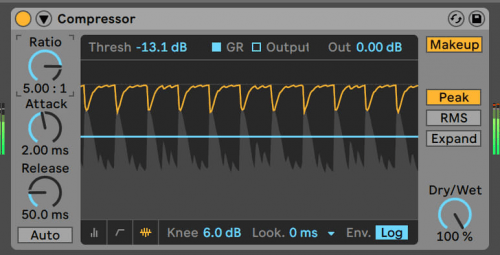A compressor and a limiter are critical components of audio production, but while they function quite similarly, they are far from being interchangeable. Read more to learn about the differences between the two.
Summary Table
| Compressor | Limiter |
| The ratio used for a compressor is always lower | The ratio used for a limiter is always higher |
| Ratio: Typically 5:1 or lower | Ratio: Typically 10:1 or higher |
| Mainly used to level out sound variations | Mainly used to prevent digital distortion |
| Commonly used during the early stages of audio production | Commonly used during the final stages of audio production |
| Filters unwanted sound signals from instruments and busses | Useful in making sure that the signal levels are consistent throughout all the track |
Definitions

A compressor is an electronic device mainly used to process and control the dynamic range of audio signals.

A limiter, as the name implies, is a device that limits audio signals to a particular threshold to prevent overload, which can cause sound distortion, or “clipping.”
Compressor vs Limiter
The two are closely-related features that work under a specific threshold, which is selected and set by users. But while they are equally-important safety nets used by audio engineers, there is still a major difference between a compressor and a limiter.
Ratio
In audio production, ratio is used to set and control audio signals. Normally, the ratio used for a compressor is 5:1 or lower.
In this particular ratio setting, “5” represents the number of dB that should go over the threshold before the audio output rises to “1” dB.
Simply put, for every 5 dB of audio signal that goes beyond the threshold, only 1 dB passes through the compressor.
The ratio used for limiters, on the other hand, is always higher.
Typically set at around 10:1 or more, a limiter ratio is used to prevent digital distortion by leveling out audio signals regardless of input signal changes. By setting the maximum ratio, a limiter can block unwanted sound that goes over the threshold.
Main Function
Technically, a compressor offers dynamic control by leveling out sound variations, while a limiter prevents digital distortion, also known as digital clipping. To simplify, if a compressor is like a sandpaper that polishes sound, a limiter can be compared to a brick wall that blocks unwanted signals.
Applications
During the early stages of audio production, a compressor filters unwanted sound signals from instruments and busses to prevent distortion. Mainly used for polishing vocal consonants and sharp sounds from snares and guitars, a compressor also gives users maximum control over where a particular instrument sits on the track. However, audio compression is not always applicable to all types of music. For instance, while hardcore music may need track-by-track compression, slow, ambient music may not need compression at all.
A limiter, by comparison, is more frequently used during the final stages of music production.
Unlike a compressor, a limiter is not used to even out sound variations. Instead, it is used to make sure that the signal levels are consistent throughout all the tracks.





